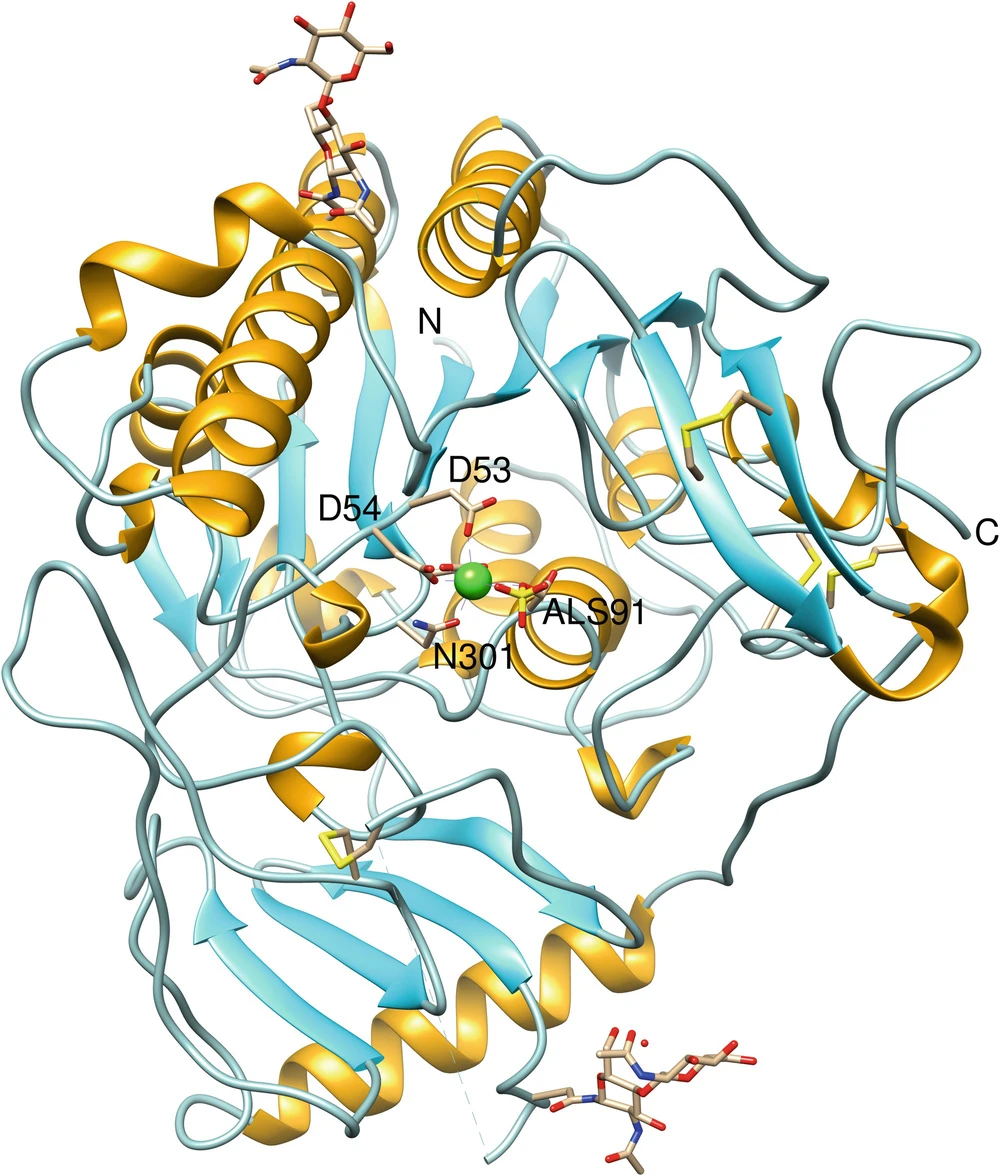Our company is a pioneering company that harnesses the power of artificial intelligence to revolutionize enzyme design and optimization. We specialize in providing state-of-the-art AI-guided enzyme design services to industries seeking innovative solutions and enhanced enzymatic processes.
Overview
Structural biology and computational modeling are crucial components of AI-guided enzyme design, providing valuable insights into enzyme structures, dynamics, and interactions. Structural biology focuses on determining and understanding the three-dimensional structures of biological macromolecules, such as enzymes. Computational modeling involves using computer algorithms and simulations to predict and analyze enzyme structures, dynamics, and interactions.
 Fig. 1. Ribbon diagram of human N-acetylgalactosamine-4-sulfatase crystal structure. (Bond et al. 1997)
Fig. 1. Ribbon diagram of human N-acetylgalactosamine-4-sulfatase crystal structure. (Bond et al. 1997)
Our Services
- Obtain the three-dimensional structure of the target enzyme through experimental techniques like X-ray crystallography, NMR spectroscopy, or cryo-EM. If experimental data is not available, use homology modeling to generate a reliable model based on related protein structures.
- Perform molecular dynamics (MD) simulations to study the enzyme's dynamics, flexibility, stability, and conformational changes during catalysis. This can provide valuable insights into the enzyme's behavior.
- Utilize docking algorithms to predict the binding modes of substrates, cofactors, or ligands to the enzyme's active site. This helps understand substrate specificity and identify key interactions for catalysis.
- Consider performing quantum mechanics/molecular mechanics (QM/MM) calculations to investigate reaction mechanisms, transition states, and energetics in more detail.
Why Choose Us?
- World-Class Expertise in Structural Biology: Our team of renowned scientists and experts are leaders in the field of structural biology. With extensive knowledge and experience in techniques such as X-ray crystallography, NMR spectroscopy, and cryo-electron microscopy, we can determine the three-dimensional structures of enzymes with exceptional precision. This critical step lays the foundation for subsequent computational modeling.
- Advanced Computational Modeling Techniques: We harnesses state-of-the-art computational modeling techniques to gain deep insights into enzyme structures and dynamics. Our expertise extends to molecular dynamics (MD) simulations, quantum mechanics (QM) calculations, and docking studies. By employing cutting-edge algorithms and software, we can predict enzyme-substrate interactions, binding affinities, and reaction mechanisms.
- Homology Modeling and Structure Prediction: In cases where experimental data is limited or unavailable, we excel in homology modeling and structure prediction. Leveraging advanced algorithms and bioinformatics tools, we generate reliable enzyme models based on related protein structures. This enables us to bridge the knowledge gap and proceed with computational analysis.
Contact us today to discuss your enzyme design needs and explore how our Structural Biology & Computational Modeling services can revolutionize your research and development efforts. Together, let's unlock the full potential of AI-guided enzyme design and create enzymes with tailored properties for a sustainable future.
Reference
- Papageorgiou, A.C. X-Ray Crystallography in Structure-Function Characterization of Therapeutic Enzymes. Adv Exp Med Biol. 2019. 1148: p. 81-103.

































 Fig. 1. Ribbon diagram of human N-acetylgalactosamine-4-sulfatase crystal structure. (Bond et al. 1997)
Fig. 1. Ribbon diagram of human N-acetylgalactosamine-4-sulfatase crystal structure. (Bond et al. 1997)